A splendid unpublished work by Louis Finson (Bruges, 1580 - Amsterdam, 1617), a beautiful Conversion of Magdalene is being shown for the first time to the public on the occasion of an exhibition dedicated precisely to the theme of the sinful saint, Magdalene and the Cross. Sublime Love, scheduled at the Museo Civico di Santa Caterina in Treviso from April 5 to July 13, 2025, curated by Fabrizio Malachin and Manlio Leo Mezzacasa. This is important news, although the work is not entirely new to scholars: it had passed through Dorotheum’s auction in 2008, with attribution to Angelo Caroselli and an estimate between 20 and 30 thousand euros. Then it had disappeared from the radar until the fall of last year, when Milanese antiquarian Giorgio Baratti exhibited it for the first time, as part of the Biennale Internazionale dell’Antiquariato in Florence. And then, in Treviso, its first inclusion in an exhibition.
The Conversion of Mary Magdalene from the Giorgio Baratti Collection is a painting of rare intensity and astonishing beauty: returning it to the hand of the Flemish master was Gianni Papi, author of the critical record kept in the owner’s archive. It is not only an important piece in the reconstruction of Finson’s artistic career, but it is also a pregnant testimony of the moment when the painter, still shrouded in Flemish fascinations, opened up to the flashes of Caravaggio’s naturalism.
We are confronted with a sumptuous Magdalene, set not in the desert nor in a cave but, a fact that might seem unusual, in an elegant dressing room, rich with refined furnishings, silverware, and precious fabrics. Far from the image of the penitent saint immersed in austerity, this Magdalene is still a worldly, opulent creature, dressed in a red velvet gown of wide drapery, with a gilded damask belt encircling her hips and a generous neckline revealing, without provocation, part of her naked body. Yet it is precisely in this luxurious context that the inner drama of conversion takes place, which is why it is perhaps more appropriate to refer to the subject as a converted Magdalene rather than a penitent Magdalene. Mary Magdalene is caught in the act of tearing off her necklaces, ridding herself of the jewelry adorning her head, while with an already rapt gaze she looks upward. On the ground, the first jewelry lies as abandoned symbols of vanitas, of the transience of life, of an existence based on appearance and pleasure. The gesture is purposeful, but not theatrical: the hands tell of change, with one tearing and the other resting on the chest in a gesture of recognition and reverence.
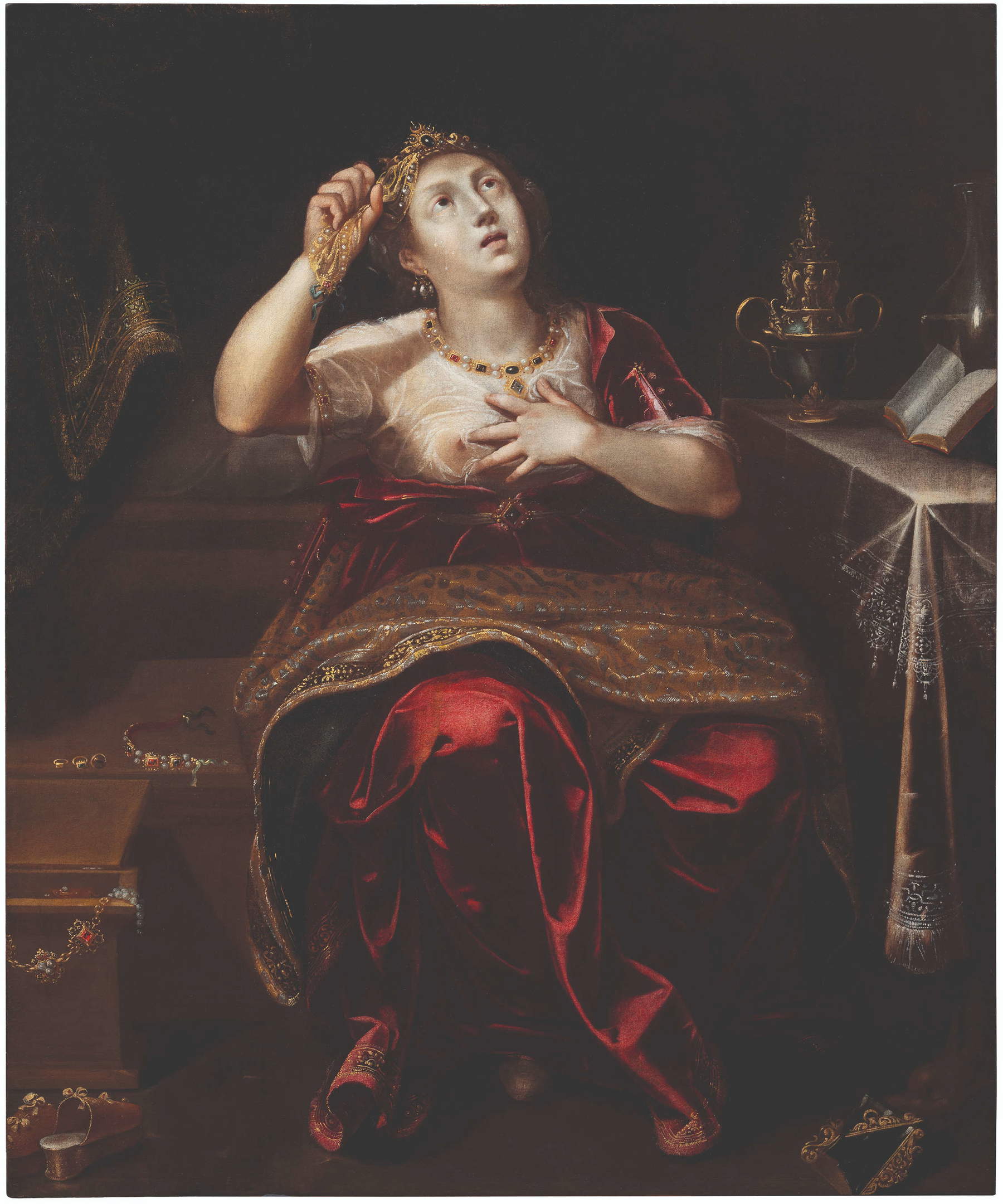
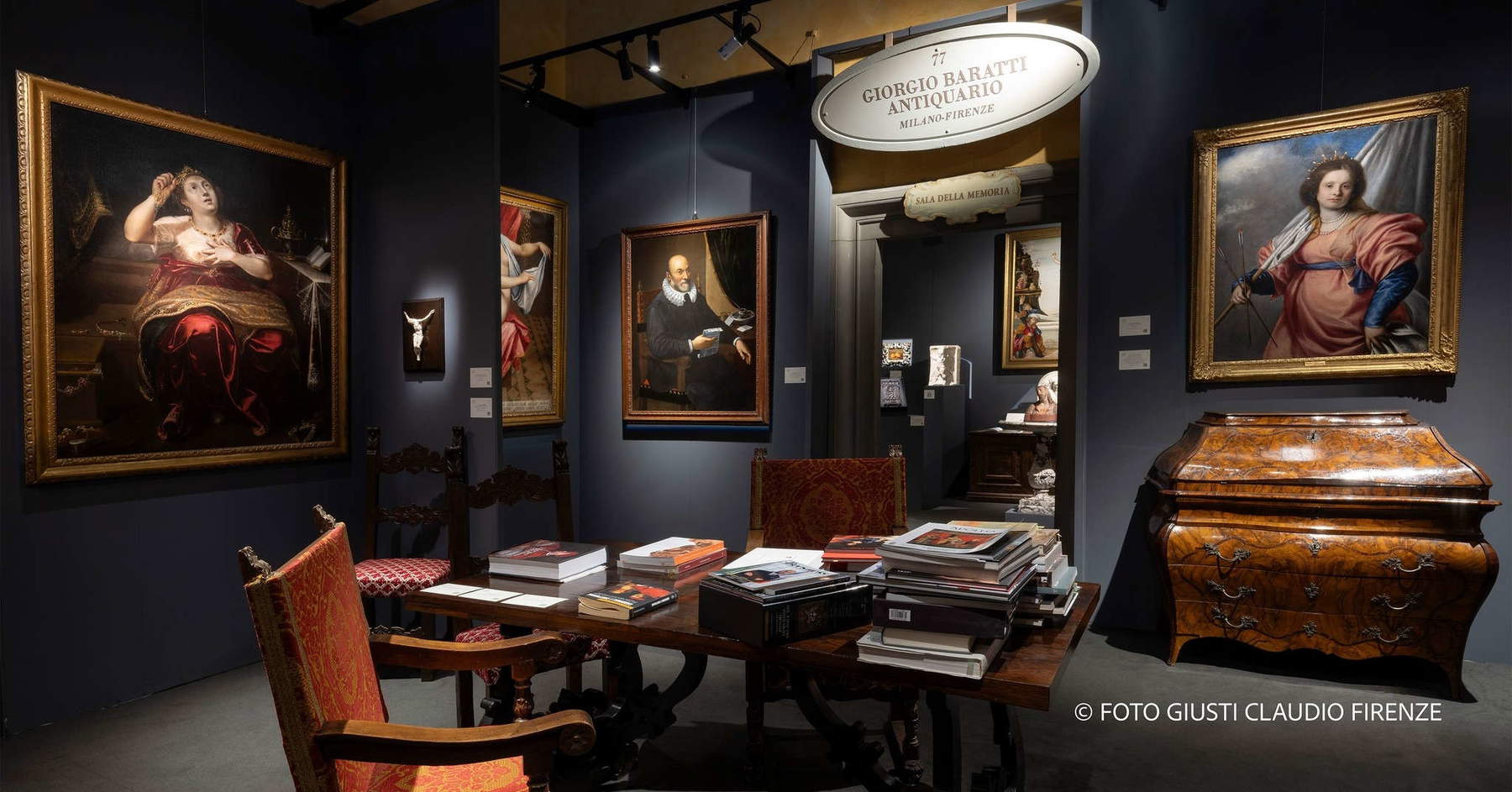
For the painting of the time, this is not such an unusual subject, although definitely less frequent than the depictions of the saint in penitence inside the cave, naked or in worn clothing. To realize this, one need only look at the selection from the same Treviso exhibition that displayed Finson’s Magdalene : one can see the disproportion between the paintings devoted to the theme of the penitent saint and those in which the moment of conversion is depicted instead (Finson’s is the only painting with this subject). There are, however, other indeed also famous cases of converted Magdalene: suffice it to think of Caravaggio’s famous painting, Martha and Mary Magdalene, preserved in Detroit, or, to find an image by Caravaggio perhaps even closer to Finson’s painting, the Magdalene in the Doria Pamphilj Gallery in Rome, a painting in which the saint appears kneeling on a floor, inside a room immersed in half-light and illuminated only by a ray of light that cuts across the’upper corner of the scene (an expedient similar to that in the Vocation of St. Matthew), while around her pearl necklaces, bracelets and gold jewelry are thrown to the floor as a sign of contempt for worldly things. Again, another famous painting is by Artemisia Gentileschi preserved in the Pitti Palace.
Among the most intense details in Finson’s work, noted Fabrizio Malachin, who compiled the fact sheet in the Treviso exhibition catalog, is that foot emerging from the robe, barely visible but loaded with meaning: it is the symbol of a step, a movement toward a new life. The iconography is classical, but Finson charges it with humanity and sensuality, without ever falling into complacency. Magdalene’s face, framed by soft brown ringlets and streaked with tears, is absorbed, mournful, almost already beyond the scene. It is the face of a woman who has understood, who has chosen, who is on the way. The gesture of the saint, caught as she pulls from her hair the precious tiara that adorns her head, is as eloquent as the painter could have imagined to convey the idea of renunciation of earthly things. “The saint,” Malachin writes, “has the appearance of a comely woman, as elegant as a lady of high rank could be, with a sumptuous gown of red velvet and a fine gilt damask drape encircling her hips; a gown of very wide draperies, with a generous neckline that carelessly shows part of her naked body (refer to the opening essay on the subject of nudity in relation to the state of the redemption process achieved). There is nothing provocative about this, especially since a foot sprouts from the luxurious robe, symbolizing a purpose of movement, of walking, of renunciation; a purpose that is confirmed by the posture of the hands, one on the chest, as if in the act of acknowledging one’s sins and of a reverent attitude, and the other tearing off the necklaces.”
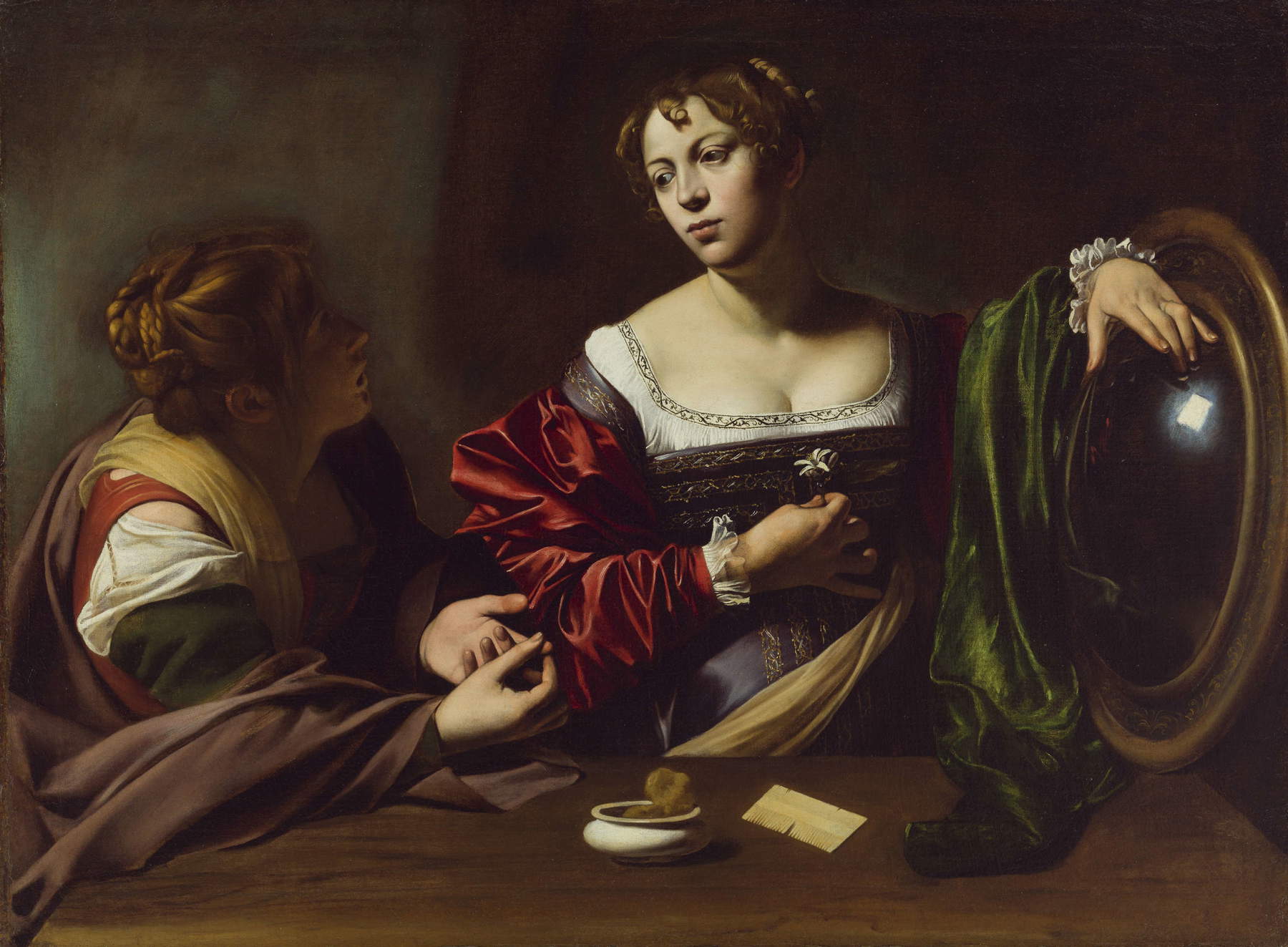
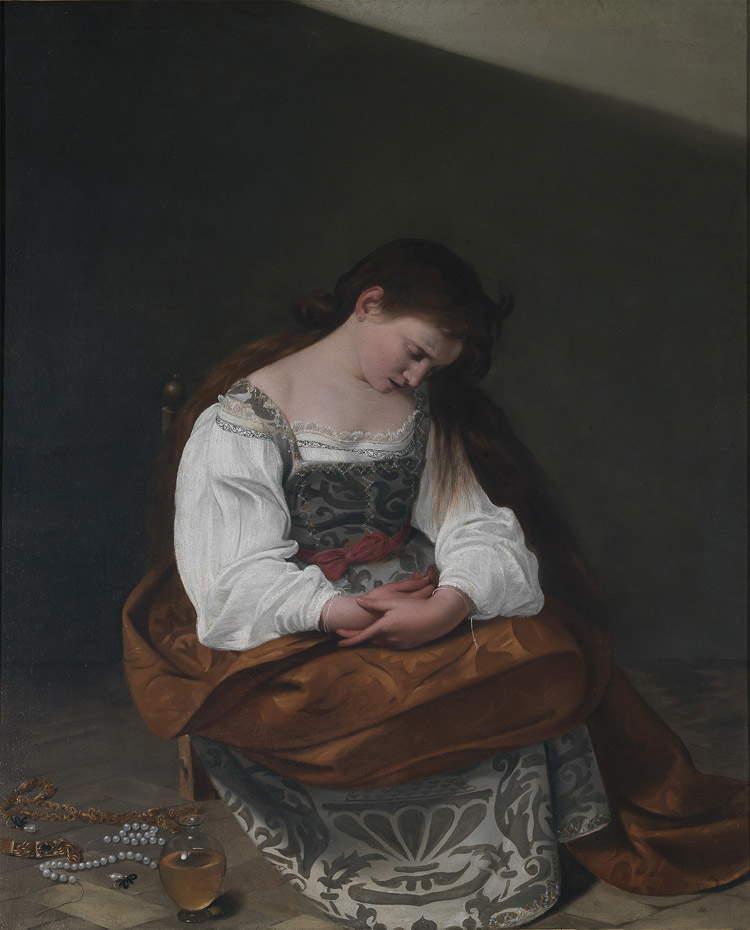
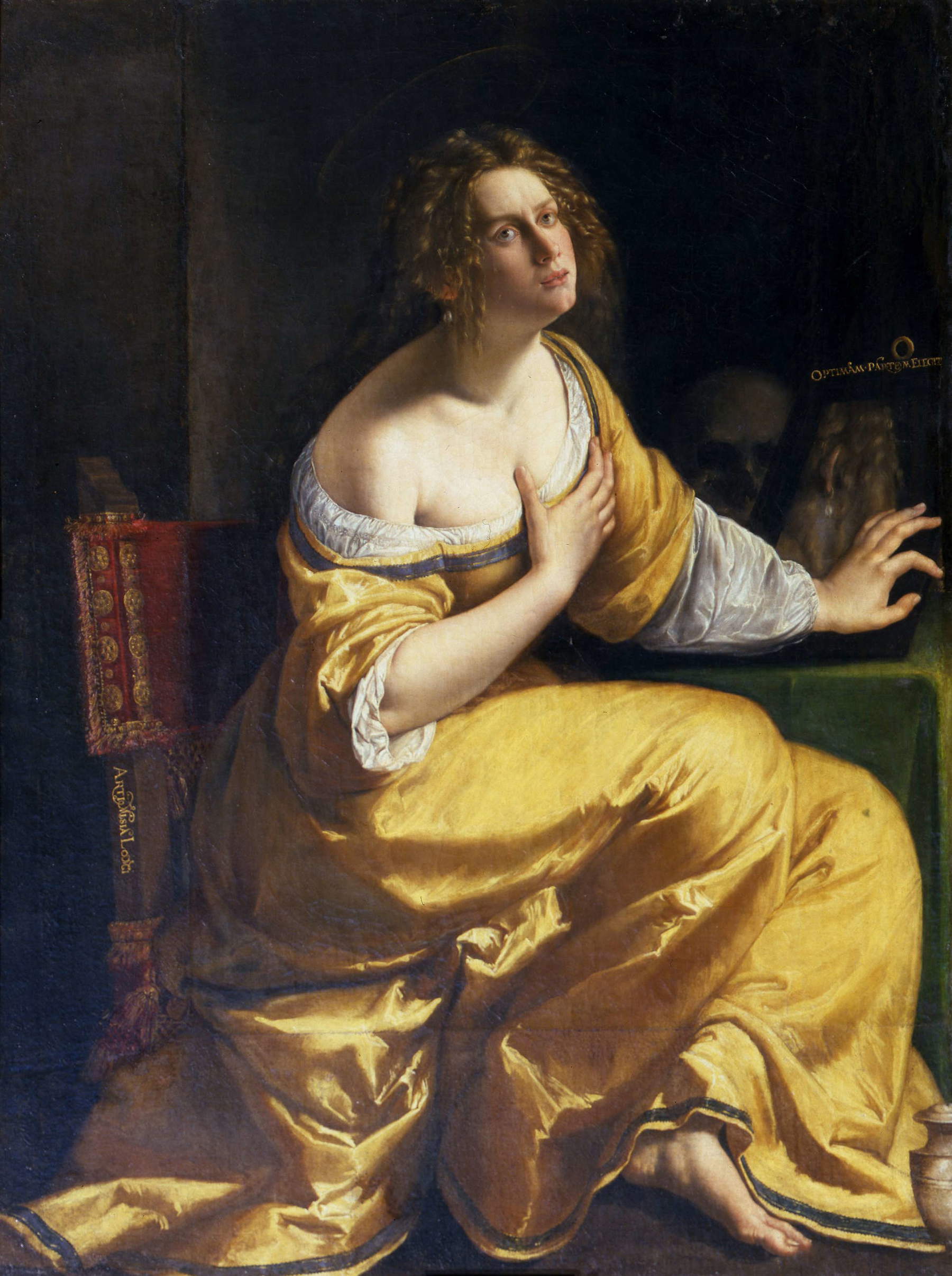
The layout of the work reveals a clear debt to Caravaggio, whom Finson met in Naples during those very years. The figure’s emergence from the darkness of the background, the lighting that shapes the face and drapery, all speak of a naturalism still in the making, more suggestion than imitation. Compared to Merisi’s Magdalene now at the Doria Pamphilj Gallery, which depicts a repentant prostitute in a stark, dim setting, Finson remains anchored in a more sumptuous, Flemish-like aesthetic, a style that has yet to fully dissolve into the dramatic urgency of Caravaggesque realism, however much it is possible to imagine already a contact with the Lombard painter, for in Finson’s work the tension toward truth is already present, and it is in this balance between worldliness and redemption, between sensuality and spirituality, that the work finds its strength. Finson’s Magdalene is not yet the figure fleshed out by penance, but she is a woman at the culmination of her inner journey, at the crucial moment of choice.
Confidently attributed, as mentioned, by Gianni Papi, the canvas precedes, according to the scholar, the direct encounter between Finson and Caravaggio in Naples, thus standing as a fundamental junction in understanding the Flemish artist’s stylistic evolution. Finson, known to many as a copyist of Merisi, is in fact far more than an imitator, or even an epigone: in the converted Magdalene, his personal language manifests itself through the refinement of the drapery, the care for the hairstyle, and the composure of the poses, which find correspondences with such certain works as theAllegory of the Five Senses from Braunschweig or the Venus and Cupid preserved in a private French collection.
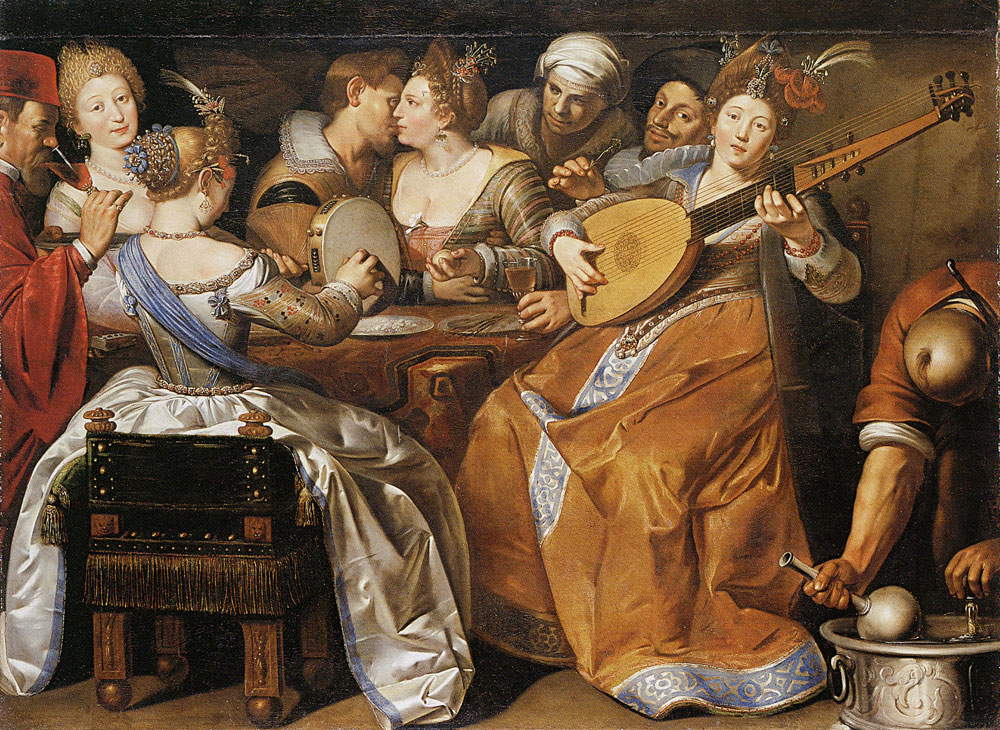
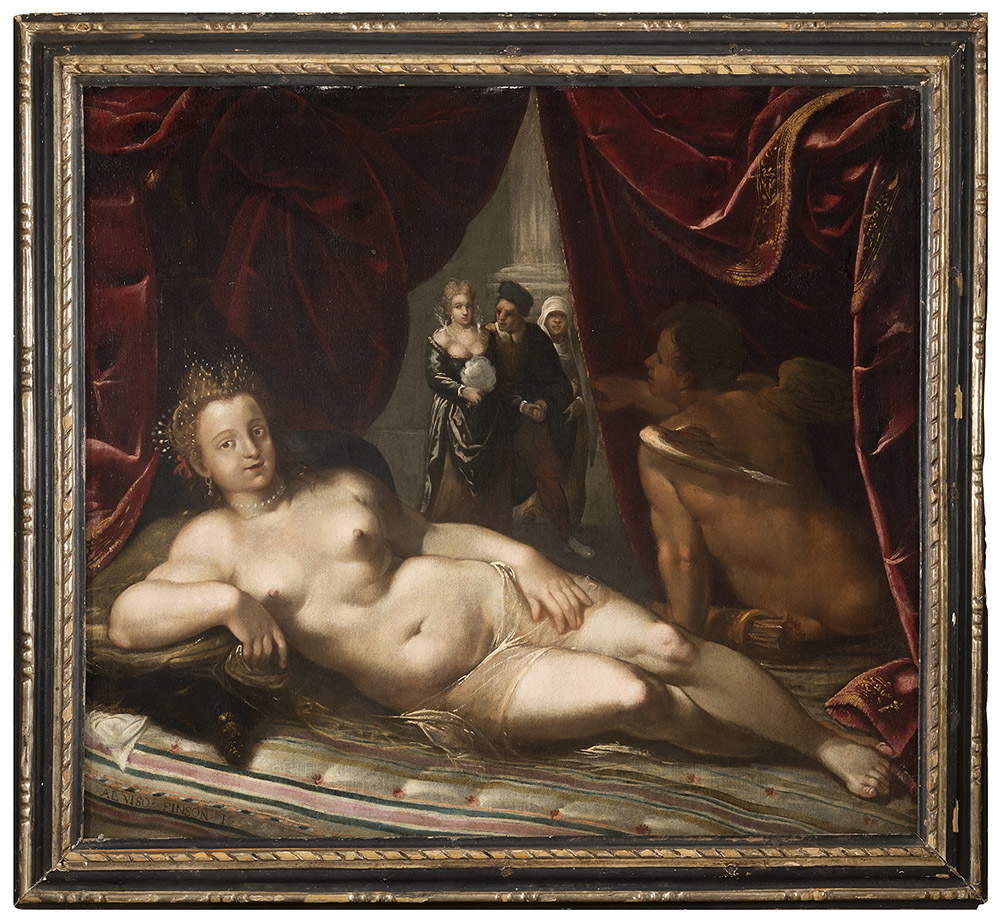
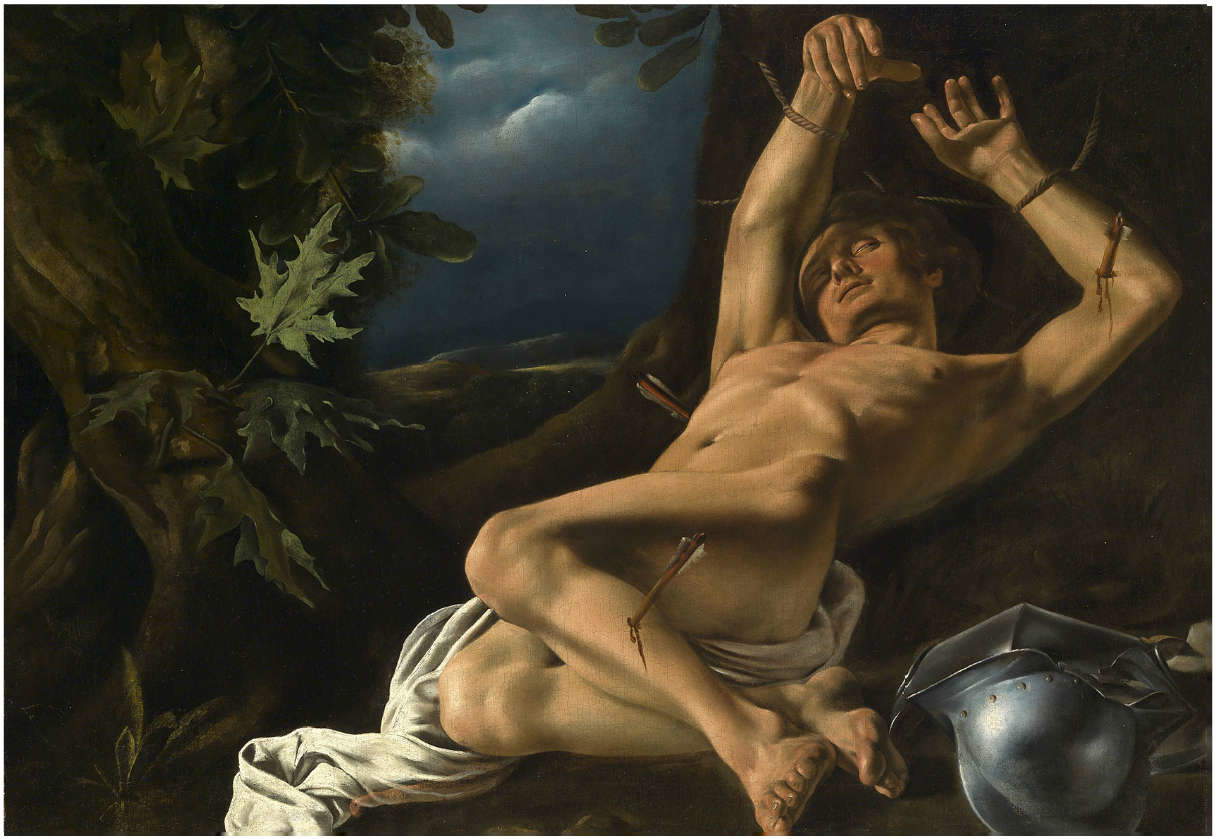
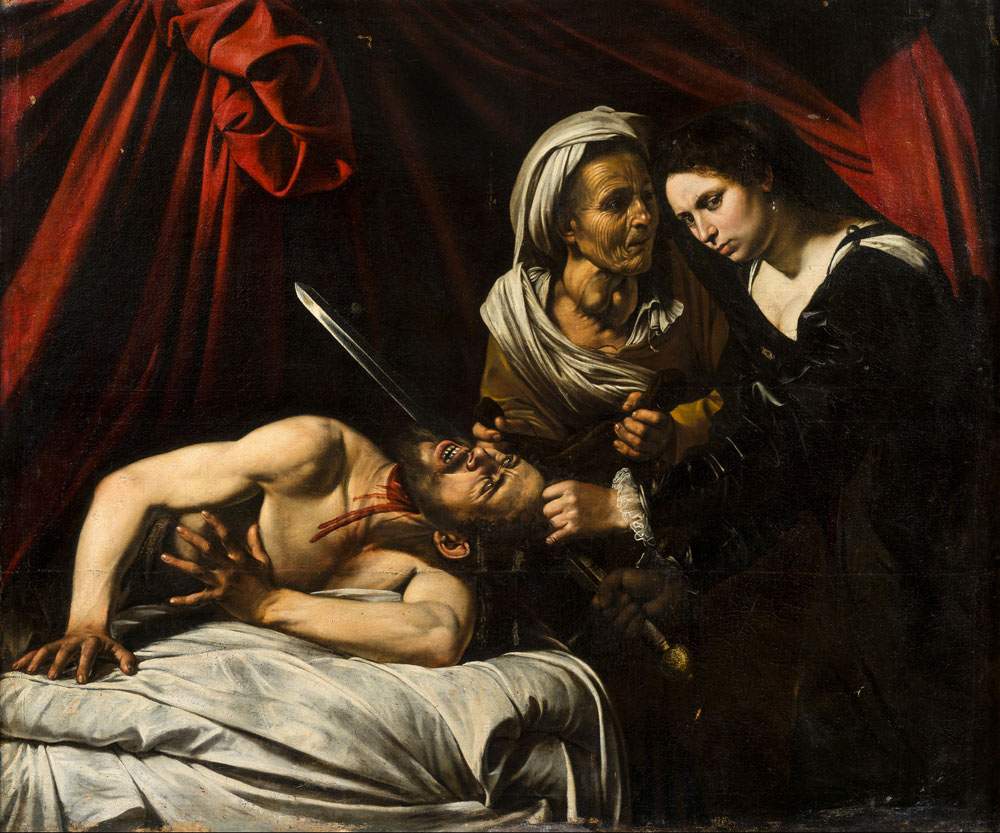
The painting for Malachin "is imbued with that Neo-Dutch taste for worldly, sensual painting, with some early contact with the naturalism of Merisi, whom Finson met in Naples around 1604: that naturalism that emerges glaringly in works such as Whitfield’s St. Sebastian or the Cain and Abel" preserved in Mainz. It is no coincidence that Papi connects this Magdalene to the period immediately preceding the realization, in collaboration with Caravaggio, of the much-discussed Judith and Holofernes in Toulouse: a work that would represent the most direct fruit of contacts between Finson and Merisi, who moreover for some time shared a studio, if not even a home.
In this Magdalene, therefore, we can read the beginning of a path of penance for the woman depicted by the artist, while from the artist’s point of view here we can see the threshold that separates the copyist artist from the interpreter artist, capable of merging worldliness and spirituality, sensuality and redemption, with an autonomous stylistic code. It is a psychological fresco, a manifesto of transition, a work resonating with moral tension, still embracing the elegant forms of the North, but already ready to welcome the revealing shadows of the Rome that had witnessed Caravaggio’s revolution.
Warning: the translation into English of the original Italian article was created using automatic tools. We undertake to review all articles, but we do not guarantee the total absence of inaccuracies in the translation due to the program. You can find the original by clicking on the ITA button. If you find any mistake,please contact us.